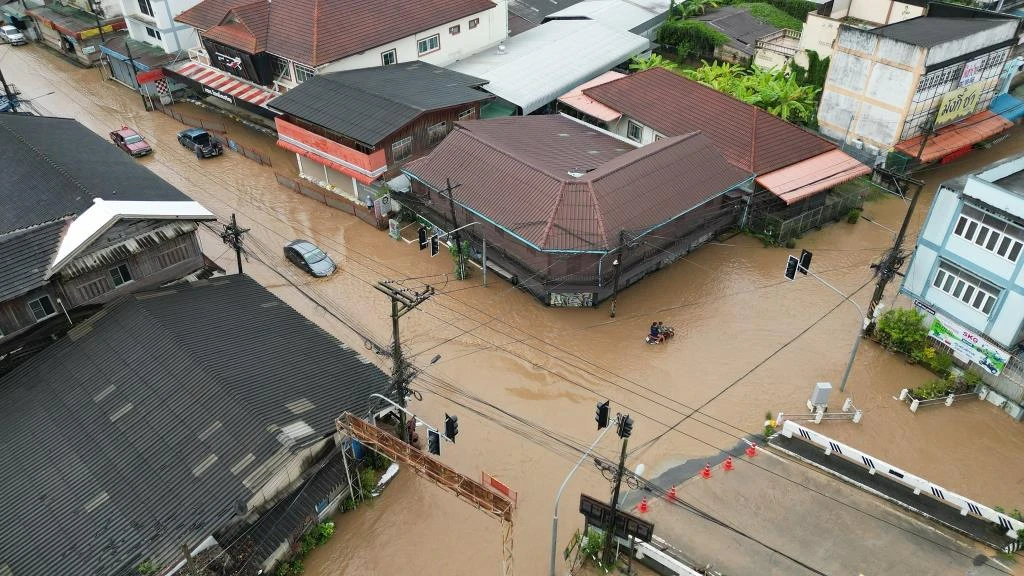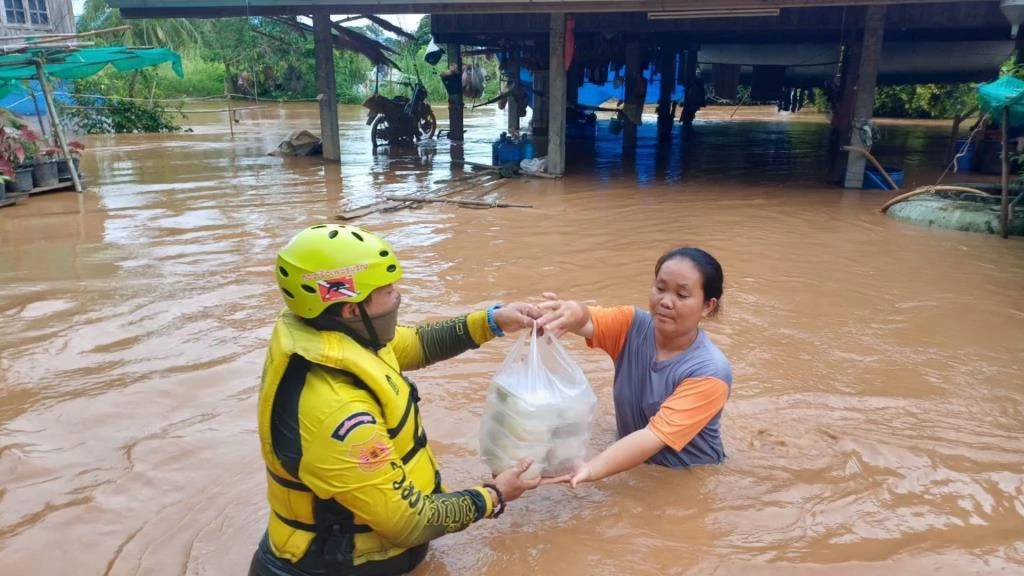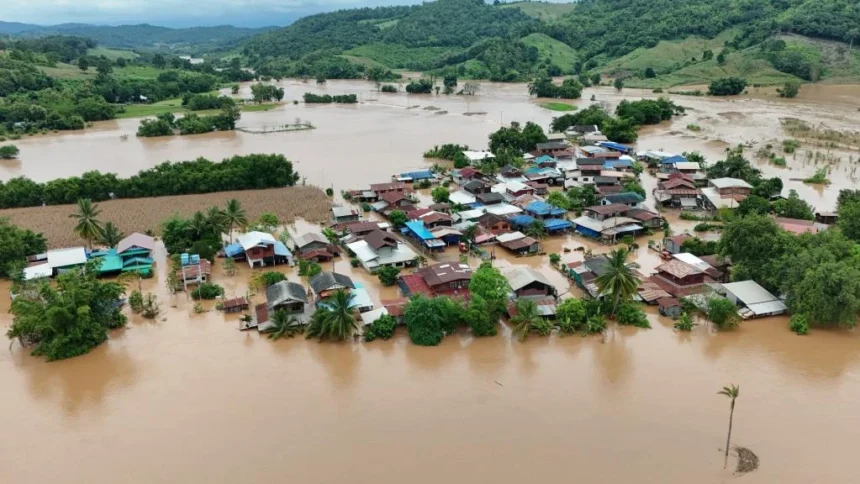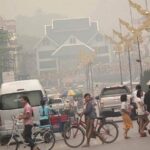CHIANG RAI – The Meteorological Department has forecast that the next 24 hours will bring less rain nationwide. Heavy showers will still hit parts of northern Thailand, especially Mae Hong Son, Chiang Mai, Chiang Rai, and Tak.
People in these areas should watch for hazards from heavy and prolonged rain. Flash floods, runoff, and river overflow may occur, especially along foothills, near waterways, and in low-lying zones.
An easterly wind covers the Northeast, the East, and the Gulf of Thailand, while the southwesterly monsoon over the Andaman Sea, Thailand, and the Gulf of Thailand remains weak.
Yesterday, the Royal Volunteer Command Centre reported the effects of Typhoon Bualoi, which brought widespread rain across the North and eastern Shan State in Myanmar.
Water levels in border rivers rose to overflow at the First Thai-Myanmar Friendship Bridge over the Sai River in Mae Sai district, Chiang Rai. Administrative officers, soldiers, and local authorities worked to remove weeds and logs near the bridge to help water drain more quickly.

On the Thai side of the Sai River, temporary and semi-permanent flood barriers more than 3 metres high kept water from spilling into Wiang Phang Kham, Mae Sai, and Mae Sai Mittraphap.
Only minor seepage occurred along the floodwall in places that sit next to it, such as the Sailom Joy market, Mai Lung Khon community, and Ko Sai community.

Across the river in Tachileik, Myanmar, opposite Mae Sai, floodwaters surged into town. Many streets in central Tachileik, Talor market, shops, and homes went underwater. Small vehicles could not pass on some routes. Residents rushed to move their belongings to safety as the water rose fast.
In northern Thailand’s Phetchabun, the latest flood wave is severe. Nine districts and 542 villages are affected. More than 20,000 households are in distress. Five deaths were reported. Lom Sak remains badly hit today.
Reporters said flooding in Lom Sak district, Phetchabun, has eased in the municipal area. Floodwater still covers parts of Tan Diao and Pak Duk subdistricts in Lom Sak. Levels dropped about 15 to 20 cm from yesterday.
The hardest hit areas are Village 4 and Village 6. Flood levels inside neighbourhoods range from about 30 centimetres to 1 metre. Some residents cannot travel as usual.
Chiang Mai saw very heavy rain in Fang, with averages topping 100 mm. Urban flooding followed, cutting many roads. In Mae Ai, floods were followed by mudslides.

The Department of Disaster Prevention and Mitigation sent a Cell Broadcast alert for heavy rain in Northern Thailand. People in risk zones along streams, canals, rivers, lowlands, and foothills were told to move belongings to higher ground, look after vulnerable groups such as older adults and bedbound patients, and follow official updates closely.
Acting Sub Lt Noppanat Supakitkosol, Fang district chief, reported that the early warning station at Ban Huai Hian, Wiang subdistrict, recorded a 12-hour rainfall of 130 millimetres, a red-level alert.
Rivers overflowed and flooded several spots, including the road in front of Fang Hospital, Khuachao Tha intersection, the bypass from Huai Bon to Pong Nam Ron, Highway 107 near the Fang shrine, and roads inside the Foxland community, where water was too high for travel. Local leaders were ordered to mobilize help for residents.
The Mae Ai district office reported that after steady rain, the Ai River rose and overflowed from 4.00 a.m. onwards. Floods hit riverside homes in Villages 2, 6, 7, and 8 of Mae Ai subdistrict, Village 9 of Malika subdistrict, and Village 6 of Mae Sao subdistrict.
Water also surged into the market, shops, and streets near the Ai River bridge, making the morning rush hour very difficult.

Sleelaya Khamphakaew, Mae Ai district chief and head of the local Disaster Prevention and Mitigation command centre, led Territorial Defence Volunteers (Company 5) to help evacuate vulnerable residents and move goods to higher ground.
Mae Ai subdistrict municipality deployed machinery and crews to clear large amounts of driftwood clogging the bridge to improve water flow.
The Kok River, flowing from Shan State, Myanmar, rose near Mae Na Wang, Mae Ai district. At 8.00 a.m., the level was only about 70 centimetres below the overflow point. The Chiang Rai DDPM office warned communities downstream from Mae Ai to monitor the Kok River closely.
In Ban Mok Pao, Village 10, Mae Sao subdistrict, Mae Ai, heavy rain triggered three slope failures. One slide near Mok Pao Temple and another at the Mok Pao hamlet blocked two traffic lanes, stopping vehicles. The road linking Mok Pao and Pong Hai was reduced to a single lane.
At the Mae Sao weir, debris blocked one lane. A fallen tree brought down one power line, though poles were not damaged. The Mae Sao Subdistrict Administrative Organization sent machinery to clear several points, and some lanes have reopened.












